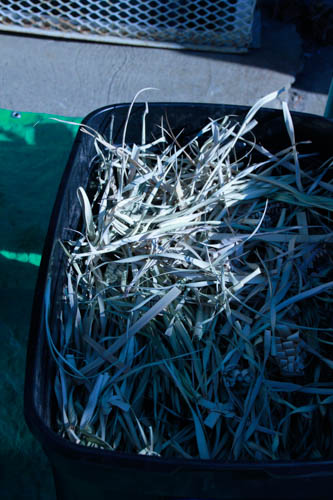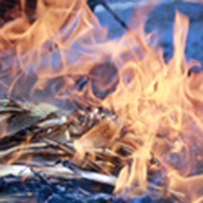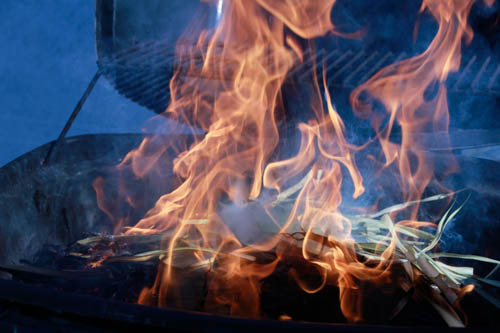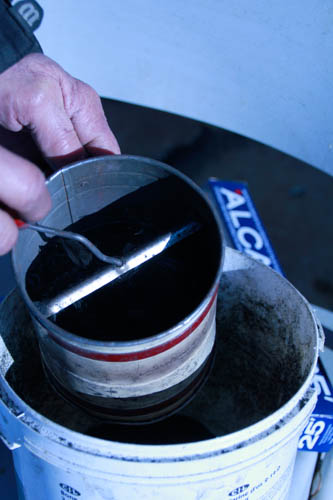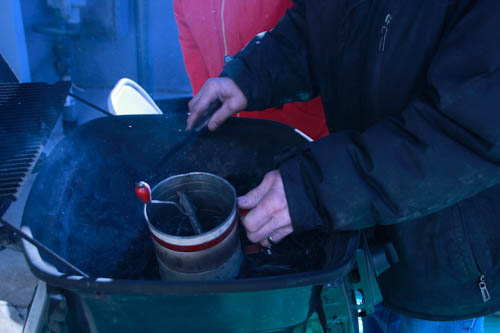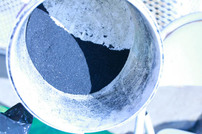Ashes and Ash Wednesday
By Gail Holland
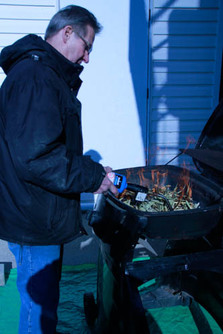
Ash Wednesday is a day of fasting and prayer that marks the beginning of Lent, 40 days before Easter. We remember that Jesus spent 40 days in the desert fasting and praying, enduring the temptation of Satan. In ancient times, ashes and sackcloth were used to express grief and sorrow for sins. Christians continue the practice of using ashes as an external sign of repentance. Ashes are placed on the worshipper’s forehead in the sign of a cross, as the words “Turn away from sin and be faithful to the gospel” are spoken and responded to with a heartfelt “Amen”.
In All Saints Parish preparation of the ashes begins when the people of the parish bring back the palms that were blessed and they received the previous year on Palm Sunday. Larry Myers has been burning the palm branches and preparing the ashes for our parish for the last ten years.
Palms are first cut up into smaller pieces which allow them to burn more quickly. They are placed in a burning container, in this case an old barbecue, with a tray placed underneath to catch the ash.
Palm leaves are dry, having lost their moisture through the year, leaving only the cellulose material, which also help them to burn more quickly but at the same time reduces the volume of ash received. As they burn, the palm branches need to be stirred about in order to introduce the oxygen that is required for the burning process to continue. Once burned, the carbon material is collected and placed in an old-fashioned flour sifter. The ashes are stirred and sifted reducing them to a fine granular powder.
It is amazing the amount of palm leaf material that is needed to obtain a sufficient amount for distribution on Ash Wednesday when ashes are distributed at Masses in the churches and schools and at nursing homes and lodges.
In All Saints Parish preparation of the ashes begins when the people of the parish bring back the palms that were blessed and they received the previous year on Palm Sunday. Larry Myers has been burning the palm branches and preparing the ashes for our parish for the last ten years.
Palms are first cut up into smaller pieces which allow them to burn more quickly. They are placed in a burning container, in this case an old barbecue, with a tray placed underneath to catch the ash.
Palm leaves are dry, having lost their moisture through the year, leaving only the cellulose material, which also help them to burn more quickly but at the same time reduces the volume of ash received. As they burn, the palm branches need to be stirred about in order to introduce the oxygen that is required for the burning process to continue. Once burned, the carbon material is collected and placed in an old-fashioned flour sifter. The ashes are stirred and sifted reducing them to a fine granular powder.
It is amazing the amount of palm leaf material that is needed to obtain a sufficient amount for distribution on Ash Wednesday when ashes are distributed at Masses in the churches and schools and at nursing homes and lodges.
